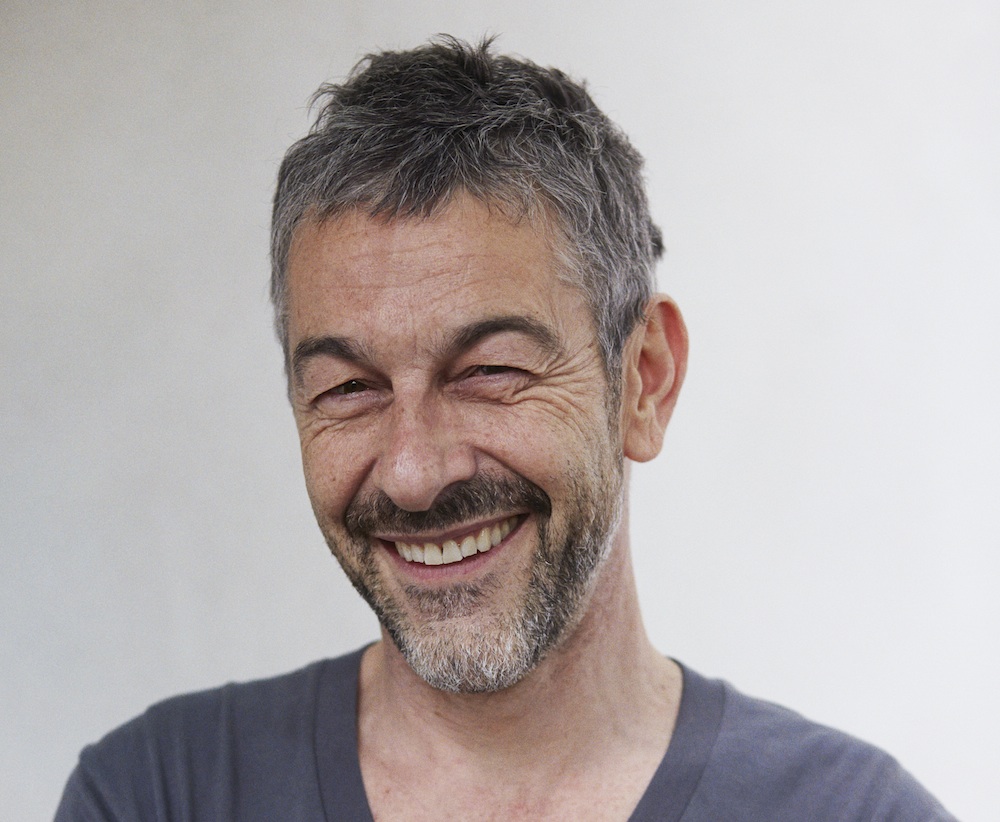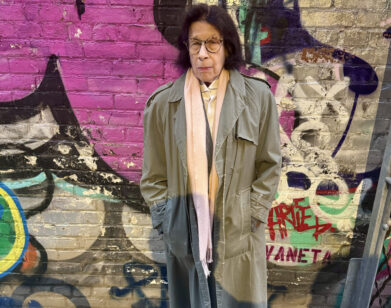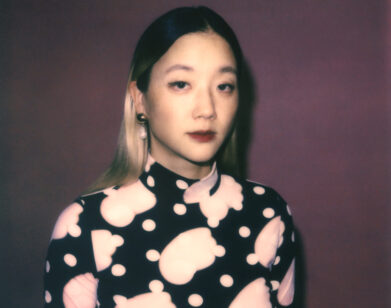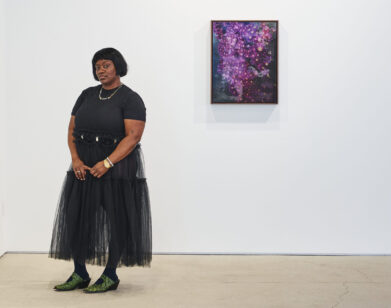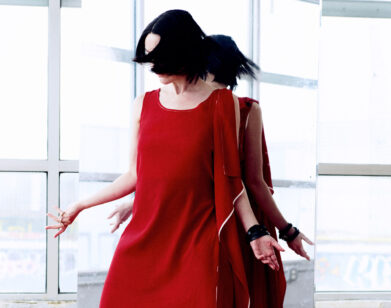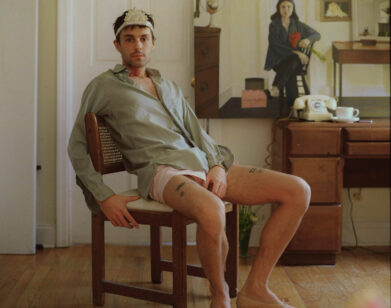Pierre Huyghe: Sculptor of the Intangible
There is virtually no art world convention that Pierre Huyghe has not sought to redefine. From customs of exhibition display, materiality, and medium, to the very ways in which we define contemporary art, Huyghe has broken the rules with his signature macabre flair. Given the scope of his vision, it might not be surprising that he is also one of the most decorated artists of his generation, having been honored with several of the industry’s most prestigious international awards, including the Kurt Schwitters Prize, the Contemporary Artist Award, and the Hugo Boss Prize. Though it is a little ironic, too—that an artist whose whole practice is devoted to challenging the stiff institutional structures of the art world be so successful on a prize circuit often criticized for recapitulating the status quo.
On the surface, the newest piece of hardware Huyghe is adding to his shelf, the 2017 Nasher Prize, which he will officially receive this Saturday, is perhaps another example of this. Sponsored by the Nasher Sculpture Center in Dallas, Texas, the Nasher Prize comes with $100,000 in cash, and an award designed by Renzo Piano (who also designed the museum). It’s given annually to a living artist who “elevates the understanding of sculpture and its possibilities.” And while Huyghe’s work certainly fits the bill in that it challenges us to reconsider the very look and function of contemporary art in this age of late-capitalism, its status as sculpture is dubious at best.
We asked Huyghe about this when we visited his New York studio on a gloomy afternoon in January. He was jetlagged—a regular state of mind for the artist, who perpetually has ongoing projects around the world—and nursing his electronic cigarette like the consummate Frenchman he still is. “I’m very grateful to be honored in this way, but I have personally never asked myself about what category my work fits into,” says Huyghe. “I never felt beholden to sculpture, or film, or any medium, even when I work within different disciplines. To be honest, it has never been on my radar.”
Huyghe’s studio doesn’t look like the classic artist’s workspace. Everything is neat and orderly; traditional art supplies are few and far between. But that’s not a shock: like any conceptualist, his creations are largely intangible. The physical objects employed are not autonomous works unto themselves, but surrogates for abstract ideas behind them. For Huyghe in particular, they function as structural vessels for larger ecosystems—whole worlds in which individual parts aren’t as important as the dynamic network they add up to. Take for example Untilled (2011–12), a reclining nude figure carved from stone featuring a living bee colony in the place of its head; or Zoodram 4 (after Sleeping Muse by Constantin Brancusi) (2011) a marine ecosystem, with a hermit crab living in a shell modeled off of Brancusi’s sculpture, Sleeping Muse. “An interaction in which I push a button and something responds is not one I’m interested in,” says Huyghe. “I’m not so much considering the individual—one species or one object with a fixed radiation. To me, it has to be a mesh of interdependent things, biotic and abiotic.”
“I think that the choice of Pierre Huyghe is a statement of how the range of practices have become encompassed by sculpture, and can be considered as sculpture,” says Jeremy Strick, the Director of the Nasher Sculpture Center. For Strick, it’s not that Huyghe’s work defies classification as sculpture; it’s that our idea of sculpture is too reductive. Change your parameters and it’s easy to see Huyghe is a sculptor. “When we think of sculpture, we typically think of it in terms of space, volume, mass—three dimensions,” says Strick. “But sculpture has always involved a fourth dimension: time. Pierre’s outpu, across the board, engages with time. So, while his pieces involve all different kinds of materials—many of which normally wouldn’t be thought of in terms of sculpture—there is also a fundamental, underlying idea that is essential to the medium.”
The heart of Huyghe’s work is elusive in the truest sense of the word. More than just time, it’s change: between objects, living and dead; between organisms and their environment; in language and perception. True to form, the tenets of Huyghe’s practice also continue to evolve. “Recently, I’ve widened my parameters,” he says. “That plant, that animal, that human, that computer, that robot, that machine—those can all change, of course. But now I can also see the potential for change in, say, a stone, for example. I might not be able to see it change if I’m measuring it over the course of the human gaze, but what if I think about the state of the stone under a different set of conditions, over a longer period of time? Maybe I can’t see it change because I’m a human. What if I were a bat?”
The artist’s newest ventures embody this commitment to ecocentrism, eschewing anthropocentric ideologies in favor of considering the existence of objects outside of human perception. Huyghe has been making frequent trips to the south of Japan, where he’s installing a couple of new projects. The first, a collaborative piece with architect Francois Roche in the city of Okayama, is a house that builds itself. For the project, which is set to be completed in two years, a five-axis robot collects seismic information from the ground below, and algorithmically translates it into sets of datum that it uses to pour concrete with mycelium fungi. Like the majority of Huyghe’s works, it becomes a kind of living organism. And not only does it not require human assistance to operate, it actively fosters human life—people will stay in the house while it’s being built.
The second is a new garden work, in an as-of-yet undisclosed location, similar to the one Huyghe created for Documenta 13. The Documenta piece, like the majority of the Huyghe’s installations since, brought together—in his words—a “network of interdependent heterogenous elements to create a larger installation.” Of those were several of the artist’s own works, including Untilled, Zoodram 4, and a live dog named Human, who has one leg dyed bright pink, and runs around the garden. For the Japan iteration of the project, he’s taking it one step further, creating a smartphone application that will transmit organic information into visual data, allowing viewers to witness the biodynamic interactions between different elements. “Everyone has these devices now,” says Huyghe. “They’re like a new species on our own body, like a co-host. With this project, you’ll be able to use these devices to envision different new elements within that network. It’s not the phone I’m interested in. It’s just a device that everyone has. It’s just like the eyes, another tool of access to things that we all deal with.”
Huyghe is also creating a special new project for this year’s Skulptur Projekte Münster, opening on June 9. For now, the details are under wraps. But not because he’s a secretive person: “I can’t say so much because I’m still completely in the process,” says Huyghe. “It’s still unclear to me.” This is not uncommon for the artist—so committed is he to change and adaptation that he often finds himself still discovering the nature of the work well into its installation. It’s par for the course, then, when we learn the following: Huyghe has no specific plans for the $100,000 that comes with the Nasher Prize.
PIERRE HUYGHE IS THE RECIPIENT OF THE 2017 NASHER PRIZE.

